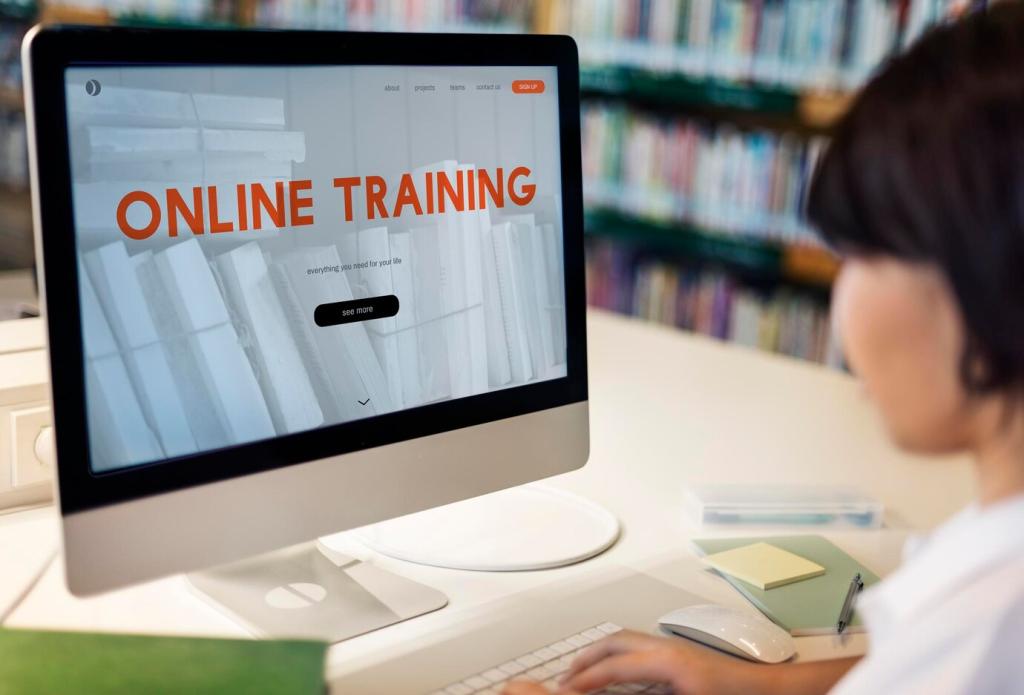How to Identify High-Quality Online Self-Help Courses
Chosen theme: How to Identify High-Quality Online Self-Help Courses. If you’ve ever opened a glossy course page and wondered, “Will this actually help me change?”, you’re in the right place. When Maya finally found a program that named its methods, showed a real syllabus, and offered kind community support, her morning routines stopped slipping. This home page gives you friendly, practical ways to spot the keepers. Subscribe for weekly checklists and share your experiences—your insights can guide other learners too.
Start with Expertise and Evidence
A strong course highlights instructor expertise with more than a charming story. Seek relevant degrees, certifications, supervised practice, and a track record of teaching or client outcomes. Bonus points for links to published work or talks. What credentials reassure you most? Tell us—your checklist can help other learners choose wisely.



Practice, Feedback, and Assessment
Look for exercises, reflection prompts, and real-life experiments, not only lectures. Worksheets, habit trackers, and implementation plans turn ideas into action. The course should show how practice escalates in complexity. Which practice format keeps you consistent—printable sheets, mobile checklists, or quick audio prompts? Share your go-to tool.
Practice, Feedback, and Assessment
Quality programs explain how you’ll receive input: instructor comments, structured peer feedback, or rubric-based reviews. Timely, kind guidance helps correct course without shame. Ask about response times and availability. What kind of feedback boosted your progress most—quantitative scores, narrative notes, or live office hours?


Community and Support that Feels Safe
A respectful community has clear guidelines, active moderation, and training for hosts in trauma-informed communication. Look for rules about confidentiality and respectful disagreement. How have community norms helped or hindered your learning? Share a story about a group that made growth feel safer and more sustainable.





Multiple formats for different learners
Seek videos with captions, transcripts for audio, readable slides, and alt text for images. Audio-only options and adjustable playback speeds help, too. Accessibility supports better learning for all. Which format helps you absorb self-help lessons fastest? Recommend tools or features others should look for.

Inclusive examples and language
Watch for respectful, non-stigmatizing language and diverse case studies. Courses should avoid assumptions about culture, income, family structure, or neurotype. When you feel seen, change gets easier. Share a moment when inclusive teaching made you feel welcomed—and how that affected your motivation to practice.


Proof of Outcomes without Hype
Quality courses present aggregate completion and participation figures with context, not boastful claims. They discuss what helps learners finish and how they iterate. If they measure what matters, they likely teach what matters. Which engagement signals do you trust most? Share the metrics that guide your decisions.
Proof of Outcomes without Hype
Seek detailed, verifiable case narratives that describe starting points, methods used, and concrete outcomes without miracle language. Stories should acknowledge setbacks and timelines. What evidence feels credible to you—before-and-after behaviors, habit streaks, or journal excerpts? Invite others to compare notes respectfully in the comments.
Sample lessons and previews
Look for a free module, first lesson, or mini challenge that lets you experience teaching style, pacing, and exercises. Pay attention to how you feel during practice. What preview moment made you say, “Yes, this works for me”? Tell us so others know what to watch for.
Platform reliability and usability
Consistent uptime, fast loading, intuitive navigation, and clean design reduce friction so you can focus on change. Mobile apps and sync across devices help daily practice. Which usability details delight you most—searchable transcripts, bookmarks, or progress reminders? Share your favorite small convenience that keeps you returning.
Data security and account control
Two-factor authentication, secure logins, and simple account controls show a platform respects your autonomy. Exporting your notes and progress protects the work you’ve done. What security features are deal-breakers or must-haves for you? Add them to our collective checklist so others benefit from your vigilance.

